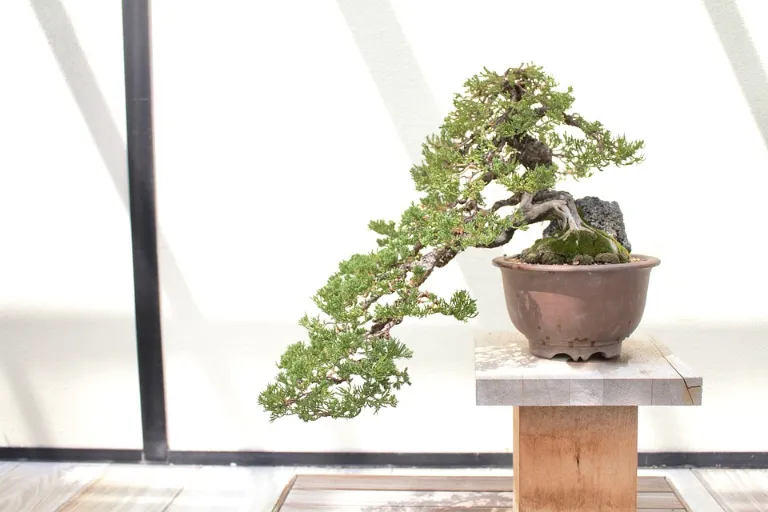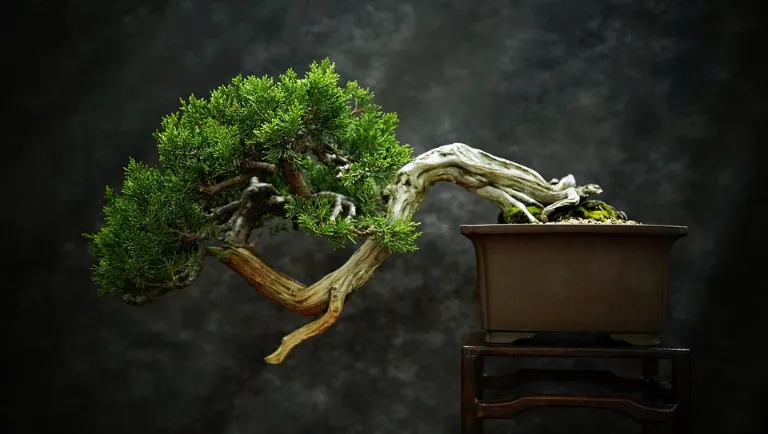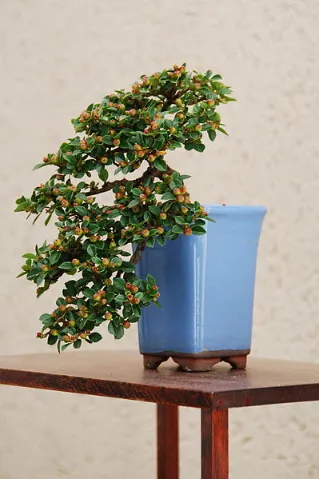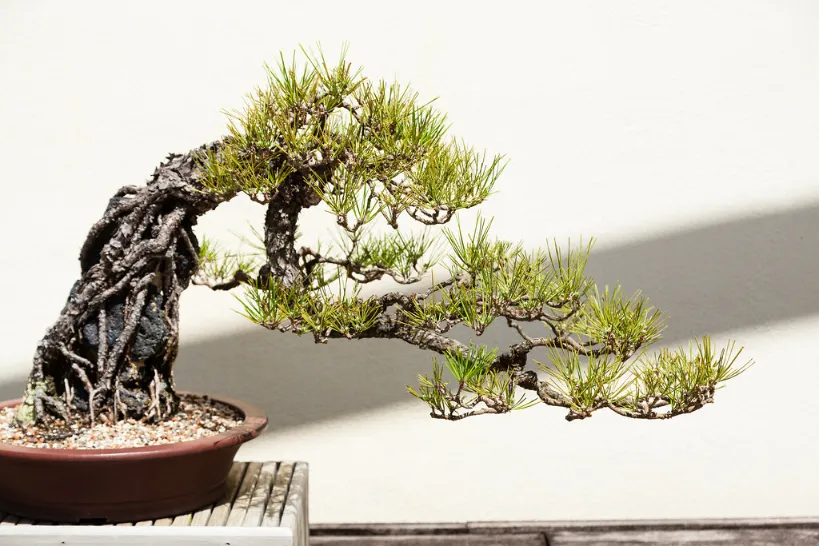Best Bonsai Trees for Cascading Style
Bonsai trees are a great way to add lush greenery and color to your home or office. While there is no shortage of bonsai tree options, it can be challenging to decide which one is the best option for you. With many styles and options available, picking the right style for your needs can be overwhelming. In this article, we’ll show you the cascading style and which bonsai trees are best.
Cascading style has been on the rise in the last few years, and it seems that the popularity of this style is only going to grow. This article will inform you of some of the most famous bonsai trees for cascading style.

What Is a Cascade Bonsai Style?
A cascade bonsai style is a growing style that has been used for centuries to grow trees in small spaces. It’s a very simple, dense, and compact way to grow and train your tree.
The process involves pruning out branches on the trunk of your tree so that it has only one main branch that grows down from the top of the tree. The trunk is then bent over, so it is horizontal, and a group of smaller branches is trained on top of this main branch. These smaller branches are then clipped back to create a cascade effect.
The cascade bonsai style allows you to keep your trees small and compact without sacrificing growth or aesthetics; however, it can be difficult for beginners because there is no set pattern for this training style.
What Is the Best Way to Cascade Your Bonsai?
Although many think that wire is the best way to cascade your bonsai, this is only one option. You can also cascade your bonsai by pruning and wiring or by just letting the branches grow into each other.
The best way to cascade your bonsai is to let the branches grow into each other. This will help you avoid having too many bare spots in your tree, making it look messy and untidy. It will also give you more space to create a natural shape for your bonsai.
If you choose not to let the branches grow into each other, you should start by trimming back all of the main branches on either side of where they meet. Next, cut off any smaller branches below eye level on both sides where they meet. Finally, cut off any shorter branches that are too close together so that they don’t interfere with each other’s growth anymore (this will depend on how much room there is between them).
Once this is done, put wire around all the new stems created by cutting off smaller ones, so they’re held together by wire instead of their roots.
Best Bonsais for Cascading Style
Juniper
Juniper is one of the best bonsais for cascading style. It works so well because junipers are adaptable plants, so they won’t have to fight off other plants as much to take over an area. In addition to being able to spread out and grow into a wide variety of shapes and sizes, they also don’t require any specific conditions – just water!
Junipers are also easy to care for, which makes them great for beginners who want to start growing their plants but don’t know where to begin. They’re also relatively low maintenance and will not require you to worry about pruning or fertilizing them for them to thrive.

Cotoneaster
The cotoneaster is a deciduous shrub that grows between 2 and 3 feet tall, with branches often covered in small white flowers. The cotoneaster has been used in Japan since the 1700s as an ornamental plant. It was brought over to the US in 1854 by a Japanese ambassador who had seen it used as a bonsai tree in his country. It is known for its glossy green leaves, making it an excellent choice for bonsai enthusiasts who want to grow their plants at home or in their garden.
Japanese Black and White Pines
Japanese black and white pines have a strong, sturdy shape that is perfect for cascading. Their branches are thick and strong and can handle heavy amounts of water without losing shape. This makes them perfect for cascading style bonsai, where you want to create a tree that looks like it’s spilling over with leaves.
It is also known as the Japanese Balsam Pine. It comes in many varieties, but most of them have similar features: they have dark green needles, white bark, and red cones. They grow very slowly, so they won’t need much maintenance; however, you do need to keep an eye on them so they don’t get too dry!
Mountain Pine
Mountain pine is a slow-growing tree that can be grown indoors or outdoors in temperate climates. It has small leaves and branches that grow outwards towards the ends of its branches. The tree grows to a height of 12 feet and lives up to 120 years, so there’s plenty of time to enjoy your new bonsai!
The best thing about mountain pine is that it doesn’t need as much sunlight as other trees. In fact, it actually prefers shade! It’s also easy to care for, so you won’t have to spend hours each day watering or feeding your plant.
Scots Pine
Scots Pine Bonsai is one of the best bonsais for cascading style because it has a strong trunk and branches that can bend without breaking. This is ideal for keeping your tree upright during heavy winds, which will help keep it safe from falling over. Scots Pine Bonsai also has soft needles that will not damage your hands when trying to move around with your hands on top of the branches, making them very easy to work with when pruning.
What Precautions Must One Take When Cascading Your Bonsai Tree?
When cascading your bonsai tree, you’ll want to take precautions to ensure the process goes as smoothly as possible. Here are some tips to keep in mind:
- Always start with a healthy and strong root system.
- When working with a root ball, remove only small sections of the soil, and place them on top of the remaining soil. Never remove more than half of the soil at once!
- Never attempt to cascade without having first trimmed back all branches that would otherwise be touching the trunk or roots of your tree.
- If you have doubts about your ability to cascade your bonsai tree successfully, please seek professional assistance from an expert before attempting this process yourself!
When Can You Train Your Bonsai To Grow in a Cascading Style?
Although there are many different bonsai styles, cascading bonsai is one of the most popular styles because it allows you to grow your tree much more quickly and efficiently than other bonsai.
The first step in training your bonsai to cascade is to take it out of its pot. If needed, you can remove all the soil from the base of the tree and place it on top of a table or other flat surfaces. Your bonsai will need to be watered regularly during this process, so ensure you have plenty of water available.
Once you have removed all of the soil from the base of your tree, take some wire cutters and snip off about an inch from each side of the trunk on each branch that you wish to keep in its cascading style. This will leave room for growth later on if necessary (though most likely not).
After removing these branches from their original position, please give them a good shake before setting them aside for safekeeping (or disposing of them). You will then repeat this process with another section on each side until you’ve reached your desired height; remember: less is more!

Potting
Potting is an essential part of growing your bonsai tree cascading style. It’s important to create balanced soil that will allow the tree to thrive. The first step in preparing your bonsai tree for potting is to remove any dead foliage. You can use pruners or scissors if you prefer, but be careful not to cut into the branches themselves. Once you’ve cleared away any dead leaves, you can move on to cleaning up the soil.
You’ll first want to remove any rocks or branches from your new tree’s root area, then remove any weeds or grass around it. If any roots have grown too long and need trimming, now would also be a good time for that! Once everything is cleaned up and ready for planting, mix some clean soil with sand or gravel and place it in a small bowl or tray so that it’s easy for you to scoop out later on when you’re ready for the potting day!
How To Allow Your Bonsai Tree to Naturally Grow in a Cascading Style?
You’ve probably seen the cascading style of bonsai trees. In this style, the branches are allowed to grow naturally, with new shoots coming from old branches. This is an excellent look for large trees and shrubs, but it can be challenging for smaller ones.
If you’re looking to allow your bonsai tree to grow in a cascading style, there are several ways to do it. The most common way is by pruning all of the branches back to the trunk at once and then letting them grow naturally until they reach their desired length. However, this method can be problematic if you want your bonsai tree to remain small or if it’s being grown indoors or in a container that doesn’t allow for much space between branches.
Another option is training your tree so that only certain parts of its branches will grow. For example, letting only one side of each branch develop leaves so that it looks like two different plants instead of a single whole plant with many leaves growing out of one branch at different ages (or seasons). This can be effective if you have time to train your tree before letting it go wild on its own.
Conclusion
When choosing bonsai trees, it is always important to consider the suitable variety. Aside from where you will put the tree, be sure to give it enough light and provide the plant with enough water. Keeping the bonsai tree in a contained area is also vital, as it may damage your furniture or flooring. A great way to have fun with little ones and learn about gardening simultaneously is to get one of these beautiful plants that are very easy to care for.











